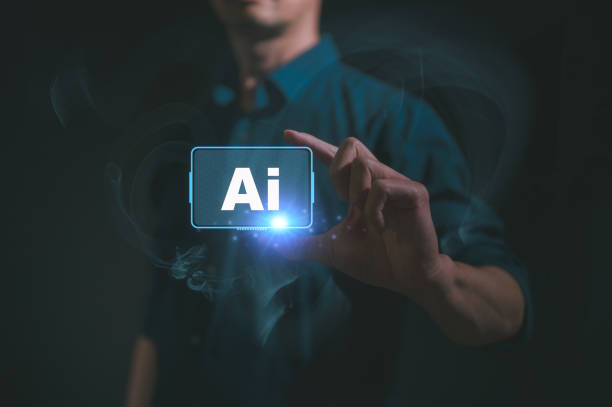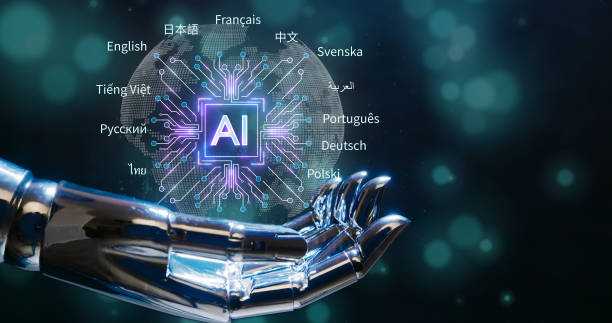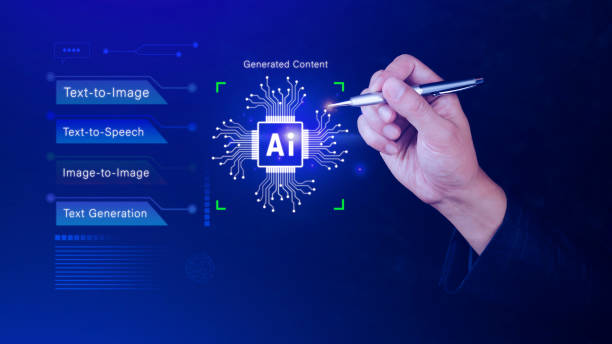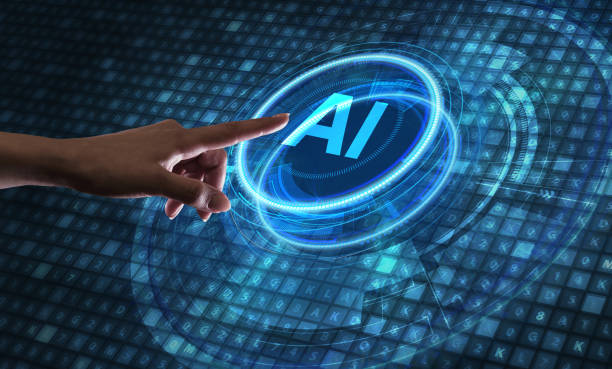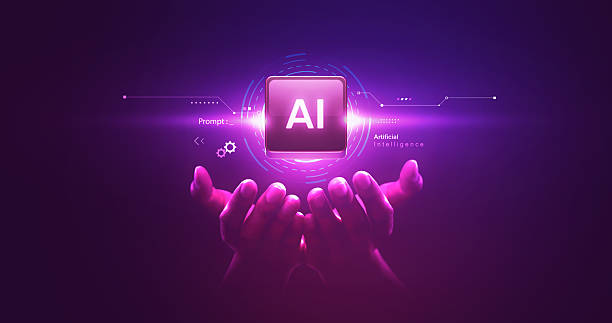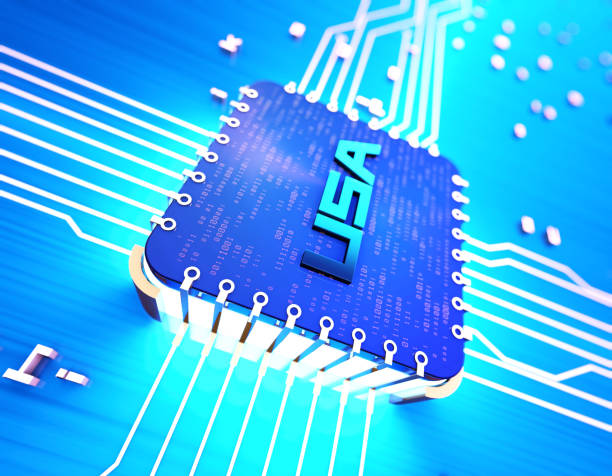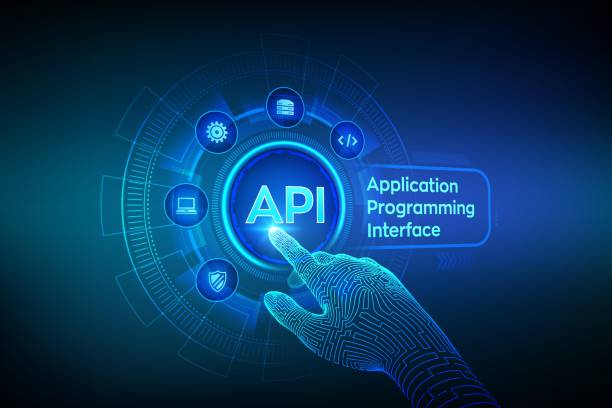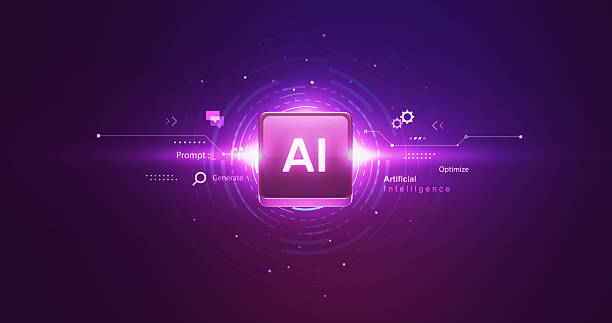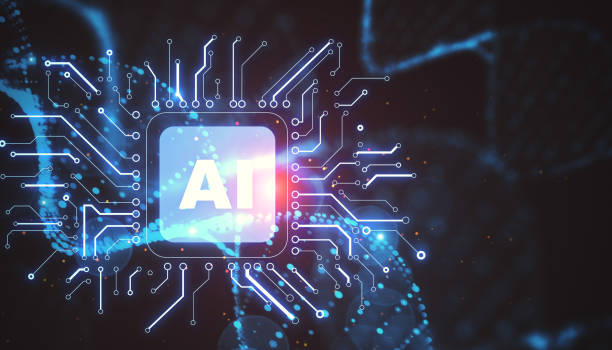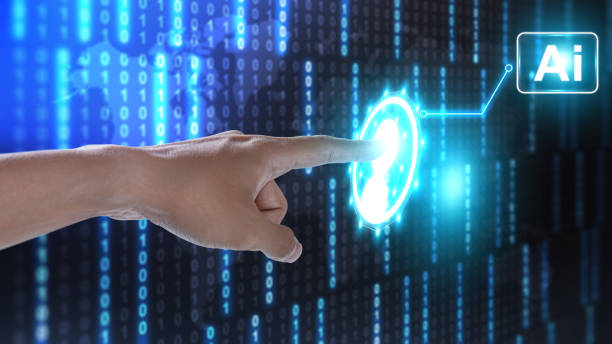What is an Artificial Intelligence Robot: Definition, History, and Types
An Artificial Intelligence Robot (AI Robot) is essentially a combination of two distinct fields: robotics and artificial intelligence.
In other words, an AI robot is a physical machine that, using artificial intelligence algorithms and techniques, is capable of performing tasks that typically require human intelligence.
These tasks can include learning, problem-solving, decision-making, pattern recognition, natural language understanding, and interacting with its environment.
The history of AI robots dates back to past decades when researchers began integrating concepts of robotics and artificial intelligence.
Early efforts were mostly focused on creating robots with limited capabilities, such as moving along a specific path or performing a repetitive task.
However, with significant advancements in artificial intelligence, especially in the areas of machine learning and neural networks, today’s AI robots are capable of performing much more complex and diverse tasks.
Types of AI robots are categorized based on their application, capabilities, and architecture.
Some of the most common types of AI robots include: Industrial Robots, Service Robots, Medical Robots, Military Robots, and Space Robots.
Did you know your company’s website is the first point of contact for 75% of potential customers?
Your website is the face of your brand. With **Rasawweb**’s corporate website design services, build an online presence that earns customer trust.
✅ Create a professional and lasting image for your brand
✅ Attract target customers and increase online credibility
⚡ Get a free consultation from **Rasawweb** experts!
Main Components of an Artificial Intelligence Robot
An AI robot consists of various components that, by collaborating, enable it to perform its intended tasks.
These components include: Sensors: Sensors are responsible for collecting information from the surrounding environment.
This information can include visual, auditory, tactile, thermal, or other types of data.
Processor: The processor is the robot’s brain, responsible for processing the information collected by the sensors and making decisions based on it.
Computers or microcontrollers are typically used for this purpose.
Actuators: Actuators are responsible for performing physical actions.
These actions can include movement, grasping objects, opening and closing doors, or other types of actions.
AI Software: AI software includes machine learning algorithms and models that enable the robot to learn, solve problems, and make decisions.
Power Source: The power source provides the necessary energy for the operation of the robot’s various components.
Batteries, solar cells, or external power sources can be used for this purpose.
Control System: The control system is responsible for coordinating and controlling the operation of the robot’s various components.
This system ensures that the robot operates safely and efficiently.
Click here to preview your posts with PRO themes ››
Applications of Artificial Intelligence Robots in Various Industries: Practical Examples
Artificial intelligence robots have rapidly permeated various industries and play a significant role in increasing productivity, reducing costs, and improving quality.
In the manufacturing industry, AI robots are used for repetitive and dangerous tasks such as welding, painting, and assembling components.
In the healthcare industry, AI robots are used for complex surgeries, assisting in patient rehabilitation, and providing remote medical care.
In the agriculture industry, AI robots are used for planting, harvesting, and spraying crops.
In the logistics industry, AI robots are used for warehousing, transporting goods, and supply chain management.
In the customer service industry, AI robots are used as chatbots to answer customer questions and provide technical support.
Practical examples of AI robot applications in various industries include: the use of surgical robots in hospitals for precise and minimally invasive surgeries, the use of warehouse robots in large warehouses for moving and sorting goods, the use of agricultural robots on farms for planting and harvesting crops, and the use of chatbots on websites and applications to answer customer questions.
| Industry | AI Robot Application |
|---|---|
| Manufacturing | Welding, Painting, Assembly |
| Healthcare | Surgery, Rehabilitation, Remote Care |
| Agriculture | Planting, Harvesting, Spraying |
Advantages and Disadvantages of Using Artificial Intelligence Robots: A Complete Review
The use of artificial intelligence robots offers numerous advantages, including: Increased Productivity: AI robots can work continuously and tirelessly, thereby increasing productivity.
Cost Reduction: AI robots can reduce costs associated with human labor, training, and accidents.
Improved Quality: AI robots can perform tasks with greater precision and consistency, thereby improving the quality of products and services.
Increased Safety: AI robots can perform dangerous tasks, preventing harm to humans.
However, the use of AI robots also has disadvantages, including: High Initial Cost: Purchasing and setting up AI robots can be expensive.
Need for Expertise: The design, programming, installation, and maintenance of AI robots require specialized knowledge and skills.
Job Displacement: The use of AI robots can lead to job loss in some industries.
Ethical Concerns: The use of AI robots raises new ethical issues, such as accountability, privacy, and discrimination.
Does your company’s website perform as befits your brand? In today’s competitive world, your website is your most important online tool. Rasawweb, specializing in professional corporate website design, helps you to:
✅ Build credibility and customer trust
✅ Convert website visitors into customers
⚡ Get a free consultation!
Challenges Facing AI Robot Development and the Future of This Technology
The development of AI robots faces numerous challenges, including: Technical Limitations: There are still many technical limitations in the field of artificial intelligence and robotics that hinder the development of advanced AI robots.
High Cost: The cost of developing and producing AI robots remains high.
Ethical Concerns: The use of AI robots raises new ethical issues that need to be addressed.
Public Acceptance: There are still doubts and concerns regarding the public acceptance of AI robots.
Despite these challenges, the future of AI robots appears bright.
Continuous advancements in artificial intelligence and robotics, reduced costs, and increased public awareness promise a future in which AI robots will play a more significant role in our lives.
It is predicted that in the future, AI robots will be employed in various fields such as housekeeping, elderly care, education, and autonomous transportation.
AI robots can make our lives easier, safer, and more efficient.
Machine Learning and its Role in the Development of Artificial Intelligence Robots
Machine Learning is a branch of artificial intelligence that allows machines to learn from data without explicit programming.
Machine learning plays a very important role in the development of AI robots.
By using machine learning algorithms, robots can learn from their experiences, improve their performance, and perform more complex tasks.
There are different types of machine learning algorithms, each suitable for specific applications.
Some of the most common machine learning algorithms include: Supervised Learning, Unsupervised Learning, and Reinforcement Learning.
Supervised learning is used to train robots to perform tasks that have labeled data.
Unsupervised learning is used to train robots to identify patterns and structures in unlabeled data.
Reinforcement learning is used to train robots to perform tasks that require interaction with the surrounding environment.
An AI robot can continuously learn and adapt to new conditions using machine learning.
How to Program an Artificial Intelligence Robot: Tools and Programming Languages
Programming an AI robot requires specific knowledge and skills in programming, artificial intelligence, and robotics.
The process of programming an AI robot generally includes the following steps: Defining Goals: First, the goals and tasks that the robot must perform should be specified.
Design: Next, the robot’s design should be carried out, including selecting appropriate hardware and designing the AI software.
Programming: In this stage, the AI software must be programmed using suitable programming languages.
Testing and Evaluation: After programming, the robot must be tested and evaluated to ensure its correct operation.
Optimization: If necessary, the robot’s software and hardware should be optimized to improve its performance.
Various tools and programming languages are available for programming AI robots, including: Python Programming Language: Python is a powerful and flexible programming language highly suitable for developing artificial intelligence and robotics applications.
Libraries like TensorFlow, Keras, and PyTorch provide powerful tools for machine learning and neural networks in Python.
C++ Programming Language: C++ is a low-level programming language suitable for hardware control and developing high-performance applications.
ROS (Robot Operating System): ROS is a software framework that provides the necessary tools and libraries for developing robotics applications.
MATLAB: MATLAB is a programming language and development environment suitable for scientific and engineering computations, simulation, and control system design.
An AI robot can be programmed using a combination of these tools and programming languages.
| Programming Language | Application |
|---|---|
| Python | Development of AI and Robotics applications |
| C++ | Hardware control |
| MATLAB | Scientific and engineering computations |
Ethical Considerations in the Development and Use of Artificial Intelligence Robots
The development and use of AI robots raise important ethical considerations that must be addressed.
Some of these considerations include: Responsibility: In the event of an error or damage caused by an AI robot’s operation, who will be responsible? The manufacturer, programmer, owner, or the robot itself? Privacy: AI robots are capable of collecting and processing a large amount of information about individuals.
How can individuals’ privacy be protected against the misuse of this information? Discrimination: Could AI robots unintentionally lead to discrimination against specific groups of people? Security: How can the misuse of AI robots for malicious purposes such as espionage, cyberattacks, or terrorism be prevented? Transparency: How can we ensure that the operation of AI robots is understandable and explainable? Job creation: The use of AI robots may lead to job loss in some industries.
How can affected workers be supported and new job opportunities created? Addressing these ethical considerations requires the formulation of laws and regulations, the establishment of ethical standards, and public education and awareness.
AI robots should be designed and used in a way that benefits society and prevents harm to individuals.
Does your current website build the trust that potential customers should have in your business? If the answer is no, it’s time to get your professional and impactful corporate website with Rasawweb.
✅ Fully customized design tailored to your brand identity
✅ Increase lead generation and your business’s credibility in the eyes of customers⚡ Contact us for a free consultation!
The Future of AI Robotics: Predictions and Outlooks
The future of AI robotics is bright and full of potential.
It is predicted that in the coming decades, AI robots will play a more significant role in our lives.
Some predictions and outlooks for the future of AI robotics include: Increased Application in Various Industries: AI robots will be more widely used in various industries such as manufacturing, healthcare, agriculture, logistics, customer service, and security.
Development of Autonomous Robots: Autonomous robots will be able to operate in complex environments without human intervention.
Development of Collaborative Robots: Collaborative robots will be able to work safely and efficiently with humans.
Development of Intelligent Robots: Intelligent robots will be able to learn, solve problems, and make decisions.
Cost Reduction: The cost of developing and producing AI robots will decrease, making them more accessible to businesses and individuals.
Increased Public Awareness: Public awareness of AI robots will increase, leading to greater acceptance in society.
AI robots will play a more important role in our lives in the future and will help solve problems and improve the quality of life.
Iranian AI Robots: Achievements and Challenges
In recent years, significant efforts have been made in Iran towards the development of AI robots.
Iranian researchers and companies have achieved notable accomplishments in this field.
Some of these achievements include: Development of Industrial Robots: Several Iranian companies have successfully designed and produced industrial robots that are used in various industries such as automotive, food, and packaging.
Development of Service Robots: Iranian service robots have been designed and produced for applications such as cleaning, goods delivery, and customer service.
Development of Medical Robots: Iranian medical robots have been designed and produced to assist surgeons, provide remote medical care, and aid in patient rehabilitation.
However, the development of AI robots in Iran also faces challenges.
Some of these challenges include: Lack of Financial Resources: Insufficient financial resources hinder extensive research and development in the field of AI robotics.
Lack of Skilled Workforce: A shortage of skilled and trained personnel in AI robotics impedes the development and commercialization of new technologies.
Sanctions: International sanctions limit access to advanced technologies and components required for the development of AI robots.
Despite these challenges, there is high potential for the development of AI robotics in Iran.
With government support, private sector investment, and the development of a skilled workforce, greater achievements can be realized in this field.
Iranian AI robots can play a significant role in the country’s economic and social development.
Frequently Asked Questions
| Question | Answer |
|---|---|
| What is an AI robot? | An AI robot is a machine capable of understanding its environment, reasoning, learning, and making decisions to perform tasks autonomously. |
| What is the difference between regular robots and AI robots? | Regular robots perform repetitive tasks based on prior programming, whereas AI robots can learn from experience, interact dynamically with the environment, and even behave in ways that resemble human intelligence. |
| What are the main applications of AI robots? | They are used in industries (manufacturing, assembly), medicine (surgery, diagnosis), services (customer support, domestic), exploration (space, underwater), and many other fields. |
| What technologies are used in the construction of AI robots? | Machine Learning, Computer Vision, Natural Language Processing, Deep Learning, and Robotics are among the key technologies. |
| Can AI robots have emotions? | Currently, robots do not have emotions in the human sense. They can identify and react to emotions, but they do not experience emotions themselves. |
| What are the main challenges in the development of AI robots? | Safety, reliability, ethics, autonomy, adaptability to complex environments, and natural human interaction are important challenges. |
| How are AI robots trained? | They are usually trained using large volumes of data, machine learning algorithms, and deep learning to identify patterns and make decisions. |
| Examples of AI robots in daily life? | Smart robotic vacuum cleaners, customer support chatbots, self-driving cars, and surgical robots in hospitals. |
| Are AI robots a threat to human jobs? | Some repetitive jobs may be automated, but at the same time, robots can increase productivity and create new jobs in the development, maintenance, and supervision of these systems. |
| How is the future of AI robots predicted? | They are expected to become smarter, more autonomous, and capable of performing more complex tasks, engaging in closer interaction with humans in various environments. |
And other advertising services from Rasa Web Advertising Agency
- Smart Advertising Campaign: Designed for businesses looking to manage campaigns through attractive UI design.
- Smart Sales Automation: A fast and efficient solution for online growth focusing on marketing automation.
- Smart Data Analysis: Transform online growth with smart data analysis.
- Smart Digital Advertising: A fast and efficient solution for online growth focusing on custom programming.
- Smart SEO: A combination of creativity and technology to increase sales through user experience customization.
And hundreds of other services in the field of internet advertising, advertising consultation, and organizational solutions
Internet Advertising | Advertising Strategy | Advertorials
Resources
An article about Artificial Intelligence and Robotics
Smart Robots Guide on Zoomit
The Future of Smart Robots
The Role of Artificial Intelligence in Today’s World
? For a brilliant presence in the digital world, Rasawweb Afarin Digital Marketing Agency paves the way for your business’s success with its comprehensive services, including corporate website design.
📍 Tehran, Mirdamad Street, next to Bank Markazi, Kazeroun Jonoubi Alley, Ramin Alley, No. 6

